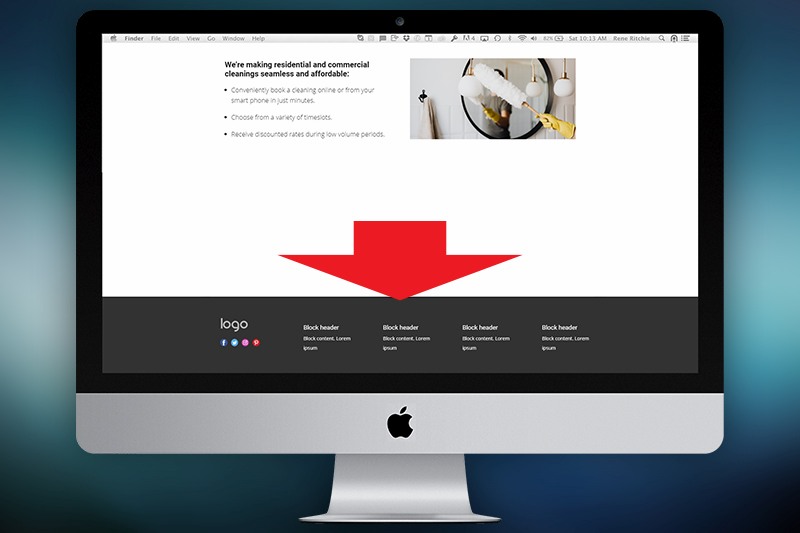Hur man fäster sidfoten på en webbsida

How To Stick Footer Down As A Styling Option On A Website
A Sticky Footer is a very popular feature today, making your page content more readable. Many people create the footer using CSS, so alternate for this you can visit Nicepage and start to generate footer designs. If you don't know how to make the sticking of the footer, it is very easy. You have only to click the footer element and push it down on the page. Besides the main content, viewport height is essential for the whole site design. The sticky footer remains at the bottom of the pages, no matter how little content is on the page. If you want more accuracy, you can set the footer's height and the body height.
The other way is on the bottom to set the footer, and when we have several pages and we have different lengths of content on each page, we need to select the right number of fields on each page in turn. If you require compatibility for browsers that do not include Grid Layout, you can also use Nicepage to create a sticky footer. Even if you don't know how to create a sticky footer using CSS, this process will be very simple. Getting started with Nicepage, you will see how it is simple and comfortable for working with a sticky footer and flexbox. Also, you can set the body margin and decide which style you choose for the footer.
It is a very common question of how to make the context area of the site more attractive, so for this, you can make the footer Stick. By the way, for this, very often, people use additional elements inside the content area. So, you do not need to hire a web developer or start using flexbox for creating the footer. Only visit Nicepage. When you add the sticky footer on the bottom of a page, it fulfills the design. Without the custom HTML and CSS styles is possible to change the appearance of the layout and make sure you will get a better result. With Nicepage, you will not need footer code, and the process will be very fast and simple.